海淀区学科教学设计模板(2018版)-参考模板
- 格式:doc
- 大小:41.50 KB
- 文档页数:4
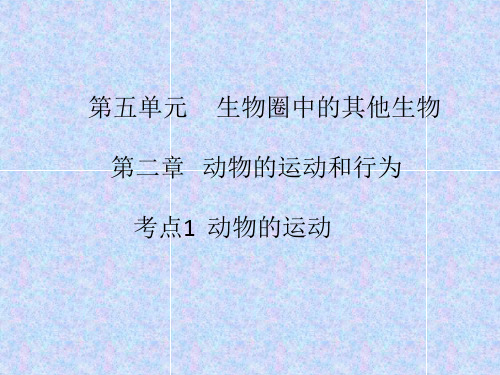
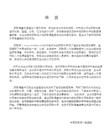

海淀区教学设计模板一、课程名称:(适用大部分课程教案)二、授课对象本教案适用于海淀区某中学九年级学生,学生具备基本的学科知识,能进行简单的学科相关分析,但对深入的理论与实践操作尚需引导和练习。
三、授课时间本课程设计为45分钟课时。
四、授课教师由具备多年教学经验,对学科知识和学生心理有深入了解的某学科教师负责授课。
五、教学目标1、知识与技能目标- 学生能够掌握课程的核心知识点,并运用到实际情境中。
- 学生能够完成基本的学科操作,形成解决问题的技能。
2、过程与方法目标- 学生通过小组合作、讨论、实践等学习过程,掌握学科学习方法。
- 学生能够运用批判性思维,对学习材料进行分析、综合、评价。
3、情感态度价值观目标- 培养学生积极的学习态度,激发对学科知识的兴趣。
- 引导学生树立正确的价值观,认识到学科知识对社会发展的积极影响。
六、教学重占和难点1、教学重点- 课程核心知识点的讲解和练习。
- 学科方法的介绍与应用。
2、教学难点- 核心知识点的深入理解与灵活运用。
- 学生在学习过程中对学科方法的掌握与实践。
- 情感态度价值观的培养与内化。
本教案模板将作为海淀区教学设计的参考,旨在帮助教师明确教学目标、把握教学重难点,并为学生提供高效、有趣的学习体验。
后续的教学过程、方法、评价等环节将根据具体课程内容进一步细化。
七、教学过程1、导入新课(5分钟)- 教师通过生动的开场白、与课程相关的实际问题或多媒体展示,吸引学生的注意力,激发学生对新课程内容的好奇心和兴趣。
- 提出引导性问题,让学生预测或思考新课程可能涉及的内容,为学生接下来的学习做好铺垫。
2、新知讲授(20分钟)- 教师清晰、系统地讲解新课的核心知识点,结合实际案例和学生的生活经验,使理论更加贴近实际。
- 使用多媒体教具、图表、实物等辅助手段,增强学生对知识点的理解和记忆。
- 在讲解过程中,教师适时提出问题,引导学生主动思考和参与,确保学生对知识的吸收和理解。
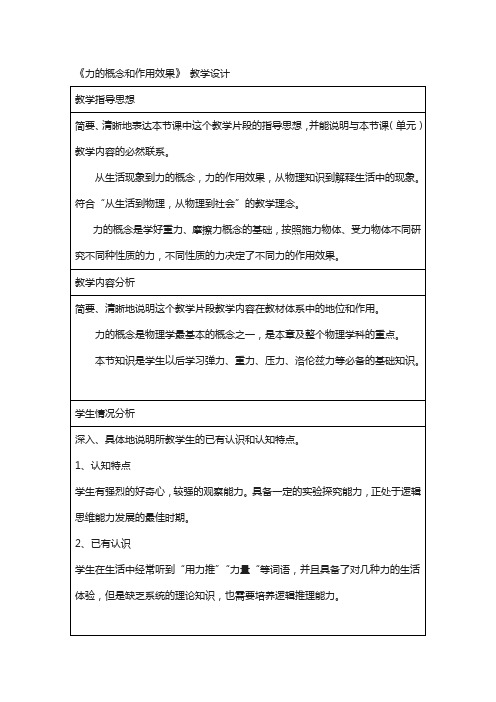
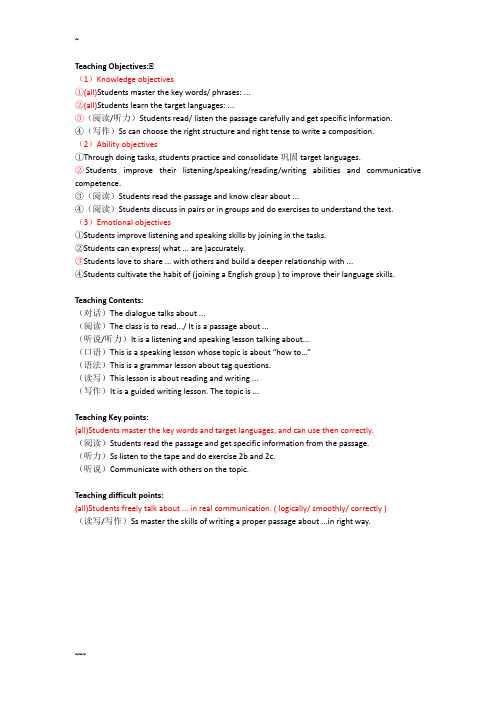
(1)Knowledge objectives①(all)Students master the key words/ phrases: ...②(all)Students learn the target languages: ...③(阅读/听力)Students read/ listen the passage carefully and get specific information.④(写作)Ss can choose the right structure and right tense to write a composition.(2)Ability objectives①Through doing tasks, students practice and consolidate巩固target languages.②Students improve their listening/speaking/reading/writing abilities and communicative competence.③(阅读)Students read the passage and know clear about ...④(阅读)Students discuss in pairs or in groups and do exercises to understand the text.(3)Emotional objectives①Students improve listening and speaking skills by joining in the tasks.②Students can express( what ... are )accurately.③Students love to share ... with others and build a deeper relationship with ...④Students cultivate the habit of (joining a English group ) to improve their language skills.Teaching Contents:(对话)The dialogue talks about ...(阅读)The class is to read.../ It is a passage about ...(听说/听力)It is a listening and speaking lesson talking about...(口语)This is a speaking lesson whose topic is about “how to...”(语法)This is a grammar lesson about tag questions.(读写)This lesson is about reading and writing ...(写作)It is a guided writing lesson. The topic is ...Teaching Key points:(all)Students master the key words and target languages, and can use then correctly.(阅读)Students read the passage and get specific information from the passage.(听力)Ss listen to the tape and do exercise 2b and 2c.(听说)Communicate with others on the topic.Teaching difficult points:(all)Students freely talk about ... in real communication. ( logically/ smoothly/ correctly )(读写/写作)Ss master the skills of writing a proper passage about ...in right way.Step 1 Lead-in ( 5 minutes)Activity 1: ReviewT: What ... do you learn in school? Can you say it in English?(Justification: Reviewing what ss have learned can help ss get ready for the new lesson. ) Activity 2: Sing a song/ Play a short filmThe teacher guides ss to sing a song .../ plays a short film(Justification: Sing a song/ play a film clip that is closely related to the topic of the lesson can arouse ss’ learning interest.)Activity 3: Free talk(Justification: Through free talk, ss get prepared to listening tasks. / help ss know what they will learn in class. )听力课Step 1 Pre-listening ( 5 minutes )Activity : Free talkT: Good morning! Look at ... So tell me ...(Justification: Free talk will attract ss’ interest and teaching content would be naturally led in.) Step 2 While-listening ( 25 minutes)Activity 1: Listen to the tape and finish exercise 2b./ summarize the main idea of the conversation.Activity 2:Listen again. Make up a dialogue according the content of tape. ( T: Talk about ... ) (Teacher show the tapescript on the PPT. Ss read the conversation and circle the key words and sentences in the conversation. The teacher write these on the blackboard such as “...”) Activity 3: Give a report. ( T: Several groups come to the front to act out your dialogue, and others give some evaluation. )(Justification: Through listening and speaking activities, ss master the language knowledge and improve language skills.)Step 3 Post-listening ( 10 minutes)Activity 1: Discussion. (T: Talk about ...)(Justification: Ss use the language knowledge in real communication, which can associate the knowledge with real life.联系)Activity 2: Make a dialogue.Ss work in groups of four to make up a new dialogue by imitating the conversation, especially by using the key words and sentences in the conversation.Activity 3: Role play.Ss act out their dialogue group by group. When one group is acting, the teacher and other ss act as judges. After the performance, the teacher corrects the common language mistakes. At the end, the whole class select one group who performs the best.(Justification: Ss develop their speaking skills and also apply the key knowledge into practice. )Step 1 Pre-task ( 3 minutes)Activity 1: BrainstormT: Please brainstorm about...(The teacher writes down on the blackboard the key words that ss have mentioned )(Justification: Talking about the topic in a real situation can arouse ss’ interest to communicate. ) Step 2 Task-cycle ( 15 minutes)Activity 1: ListeningSs listen to the tape for three times, take notes and finish exercise in the textbook. (Justification: The listening task is language input activity, which will help ss output more language information in the next activity. )Activity 2: Group discussionSs discuss in groups of four about ..., the teacher walk around and give guidance. Several minutes later, they share their ideas in the class group by group.(Justification: Ss improve their listening and speaking abilities and communicative competence.) Step 3 Language focus ( 2 minutes )The teacher guides ss to notice and conclude the target language they used. Then, the teacher writes them on the blackboard.Activity 1: Write a short passageSs are asked to write a short passage to ...(Justification: This step draw ss’attention to the language patterns, which is good for their accurate use of language. )Step 2 Presentation and practice ( 15 minutes)(Show a picture of ...)Activity 1: Question and AnswerActivity 2: Pair workT: Good job. OK, now ask your partner with the sentence “...?” and answer it by “...”.Then tell your reasons.Begin....T: Time is up. Do you know ...?S:Yes.T: Excellent. Who wants to cat out your dialogue?(Justification: To present the new words with pictures and to practice sentences in pair game are good for students to learn and master the target language.)Step 3 Consolidation巩固( 20 minutes)Activity 1: Listen and DiscussT: Now, listen to the tape and find out ...(gist).The tape will be played for three times.At the first time you should summarize the main idea. At the second time, you should listen carefully and circle (new words) that you heard on the blackboard.At third time check your answer.OK?T: Do you understand what the material(材料)is about? Discuss with your partner and find out the right answer.OK?(Then check the answers with whole class.)Activity 2: Make a dialogue/ Pair workT:Make a short conversation by imitating the listening material in pairs.(Five minutes later, the teacher encourages some ss to act out their dialogue.)(Justification: In this step, the purpose is to train ss’ listening and speaking skills. )Step 2 Pre-reading ( 5 minutes)Then ss are encouraged to talk about ... in group of four. Then the teacher asks some volunteers to give a report.(Justification: Through talking about ... , ss perceive感知the language used to ... )Step 3 While-reading ( 15 minutes)Activity 1: Fast readingSs are given one minute to read the short passage quickly, and then conclude the main idea.Activity 2: Careful readingSs are given 5 minutes to read the passage again, then do two exercise:(1)Answer the following questions in order to grasp the detailed information of the passage.①②answer: ①②(2)Read the passage and complete the sentences.①②answer:①②(Justification: The two activities will help ss understand the passage and also train their reading skills.)Step 4 Post-reading ( 15 minutes)Ss write a short passage about ...by imitating the given passage. Then they peer edit each other’s writing and give reasonable suggestions. Students revise their writing and hand in the final draft. (Justification: Ss apply the knowledge they just learned into practice.)Step 2 Presentation ( 5 minutes )The teacher shows the dialogue on the PPT, and asks ss to read the conversation. The teacher instructs them to conclude the usage of ...(Justification: Learning the grammar in inductive way can arouse ss’ learning interest and deepen their understanding of the grammar.)Step 3 Practice ( 8 minutes )Activity 1: Fill in the blanksThe teacher writes down some sentences of ... on the blackboard and asks ss to fill in the blanks with the guidance of the rule they conclude.①②③Answer:①②③After ss finish the exercise, the teacher checks their answer, leads ss to summarize the rule of target language with ss.Activity 2: True or falseThe teacher presents the sentences on the PPT and asks ss to judge which is true and which is false. Such as:①②③Answer:①②③(Justification: The two exercise can check and consolidate ss’ mastery of the grammar. )读写课Step 2 Pre-writing ( 5 minutes )The teacher guides ss to read the passage for two times and find out (the key words and target languages).(Justification: Reading the passage can make ss have a clear understanding of the structure and contents.)Step 3 While-writing ( 20 minutes )Firstly, the teacher shows the format格式and the writing standards标准of ... And then ss should write a first draft by imitating the passage.Secondly, the teacher lets ss revise 修改their letter, especially the spelling and grammar mistakes. At the same time, the teacher walks around the classroom to give them guidance. (Justification: Showing the format and writing standards can help ss polish their own passage. The activity of revising can improve their thinking and writing ability.)Step 4 Post-writing ( 10 minutes )The teacher corrects some common mistakes and makes a comment on the writing (Justification: This step can help ss master some useful writing skills.)Step 1 Pre-writing ( 5 minutes )Activity 1: BrainstormingThe teacher show some photos of ..., and asks ss ... The teacher lists down ss’ideas on the blackboard.(Justification: Brainstorming can activate ss’ thinking, enlarge ss’ language output, and help ss get prepared to write a composition. )Step 2 While-writing ( 10 minutes )Ss are given 5 minutes to write their first draft. When ss are writing, the teacher should walk around the classroom and give them guidance.Activity 1: pair workSs work in pairs to discuss and edit each other’s competition for about 3 minutes. Then ss repolish the second draft.Step 3 Post-writing ( 5 minutes )The teacher corrects the common mistakes and leads the whole class to conclude得出结论the writing essentials必要因素. Ss are asked to hand in their final draft. After the teacher reads over all the composition, he will choose three best ones to exhibit in the class.(Justification: In this step, ss get more information about how to write a better competition. )Step N Summary and homework ( 5 minutes)Students summarize the important points of the lesson, and the teacher gives a further conclusion with the blackboard design.Homework:①Review the words and sentences learned in this class.②实践类作业Make a survey:ask your friends: ——...? And the reasons. (Justification: Extend the classroom knowledge to ss’real life. It is good for ss to apply the knowledge into practice.)③Write a short passage to record what they have learned in the class.(Justification: The summary and homework will help ss review what they have learned in this class.)④Ss rewrite a passage on the topic and hand in the final draft.Board Plan:Words Sentencealoud,pronunciation What about...? Have you...?。
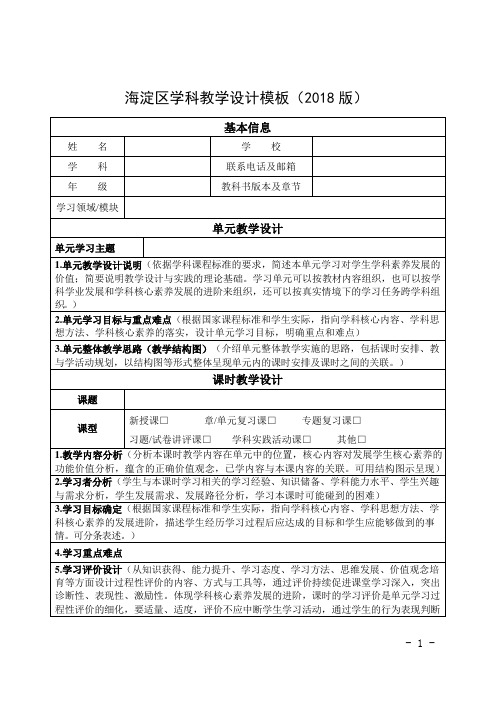
海淀区学科教学设计模板(2018版)
- 1 -
- 2 -
后续课时教学如何运用本课学习成果,如何持续促进学生发展)
- 11 -
说明:
1.教学设计突出学生学习主体地位,依据学科课程标准要求突出单元和课时学习对学生发展的价值,设计情境化、任务化学
习活动,在教师的引导、指导和服务下,增强学生学习过程的体验性、实践性和整体性。
日常工作中,教师“基本信息”可以简写。
2.教学反思突出课堂学习目标的达成度,依据学生的变化和本课教学的特色,从教学观念系统和操作系统两方面进行反思:
教学设计和教学手段等是否合理?教学行为与教学目标是否一致?情境活动和师生关系等是否符合教学规律?等等,从设计、实施、评价、理念落实等方面找出优点和不足并说明今后完善与改进的办法。
不要求面面俱到,须真实客观。
3.教学设计、课堂实施和学业评价保持一致性,目的是促进课堂“教-学-评”的改进。
可依据课堂实施实际状况整理教学实录和教学案例,案例可详细呈现在单元或某一课时的教学实践过程,呈现课堂学生的学习资源、学习活动、学习表现,呈现教师引导/评价学生深入学习的方式方法,分析学生在课堂每个环节中的实际表现和实际收获,突出课堂学生学习活动与教师的示范、指导、评价等教学过程的对应,过程完整,资源齐全,任务具体,互动充分。
- 10 -。
海淀文化素养课程设计一、教学目标本课程旨在提高学生对海淀文化的认知水平,培养学生对本地文化的自豪感和传承意识。
通过学习,学生将能够掌握海淀地区的历史、地理、科技、教育等方面的知识,提升自己的文化素养。
具体目标如下:1.了解海淀区的地理位置和历史文化背景。
2.掌握海淀区内重要历史遗迹和科技教育机构的分布情况。
3.学习海淀区在科技、教育、文化等领域的发展成就和贡献。
4.培养学生运用所学知识分析问题和解决问题的能力。
5.提高学生的文献检索和资料整理能力。
6.培养学生的团队协作和口头表达能力。
情感态度价值观目标:1.增强学生对海淀文化的认同感和自豪感。
2.培养学生热爱家乡、传承优秀文化的意识。
3.引导学生树立正确的价值观,关注家乡发展,为家乡建设贡献力量。
二、教学内容本课程的教学内容主要包括以下几个方面:1.海淀区的地理位置和历史文化背景。
2.海淀区内重要历史遗迹的分布和特点。
3.海淀区科技教育机构的发展历程和成就。
4.海淀区在科技、教育、文化等领域的贡献。
5.学生实践活动的和实施。
教学大纲安排如下:第一课时:海淀区简介第二课时:海淀区内重要历史遗迹第三课时:海淀区科技教育机构第四课时:海淀区在科技、教育、文化等领域的贡献第五课时:实践活动安排及要求三、教学方法为了提高教学效果,本课程将采用多种教学方法相结合的方式进行:1.讲授法:教师通过讲解,使学生了解海淀区相关知识。
2.讨论法:引导学生就感兴趣的话题进行讨论,提高学生的思考和表达能力。
3.案例分析法:通过分析具体案例,使学生了解海淀区在科技、教育、文化等领域的贡献。
4.实验法:学生参观实地,加深对海淀区历史遗迹和科技教育机构的认识。
四、教学资源为了支持教学内容和教学方法的实施,我们将准备以下教学资源:1.教材:编写或选用有关海淀文化的教材,为学生提供系统性的学习资料。
2.参考书:推荐学生阅读与海淀文化相关的书籍,丰富学生的知识储备。
3.多媒体资料:制作课件、视频等多媒体资料,生动展示海淀区的风貌。
海淀区学科教学设计模板(2018版)
1 / 4
后续课时教学如何运用本课学习成果,如何持续促进学生发展)
说明:
1.教学设计突出学生学习主体地位,依据学科课程标准要求突出单元和课时学习对学生发展的价值,设计情境化、任务化学
习活动,在教师的引导、指导和服务下,增强学生学习过程的体验性、实践性和整体性。
日常工作中,教师“基本信息”可以简写。
2.教学反思突出课堂学习目标的达成度,依据学生的变化和本课教学的特色,从教学观念系统和操作系统两方面进行反思:
教学设计和教学手段等是否合理?教学行为与教学目标是否一致?情境活动和师生关系等是否符合教学规律?等等,从设计、实施、评价、理念落实等方面找出优点和不足并说明今后完善与改进的办法。
不要求面面俱到,须真实客观。
3.教学设计、课堂实施和学业评价保持一致性,目的是促进课堂“教-学-评”的改进。
可依据课堂实施实际状况整理教学实录和教学案例,案例可详细呈现在单元或某一课时的教学实践过程,呈现课堂学生的学习资源、学习活动、学习表现,呈现教师引导/评价学生深入学习的方式方法,分析学生在课堂每个环节中的实际表现和实际收获,突出课堂学生学习活动与教师的示范、指导、评价等教学过程的对应,过程完整,资源齐全,任务具体,互动充分。
---精心整理,希望对您有所帮助。